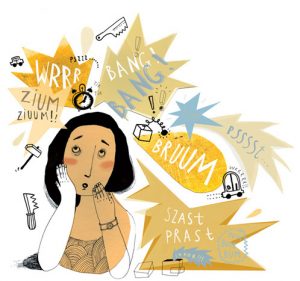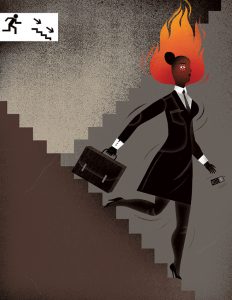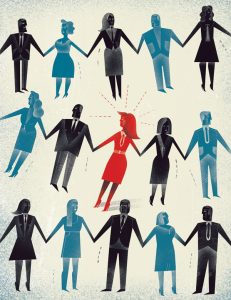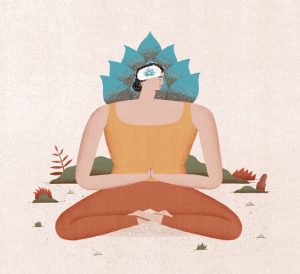BY LINA LEW | BLOGGER | SQ ONLINE (2019-20)
On any given campus, and no doubt at UC San Diego, there is perhaps nothing more strikingly familiar than self-deprecating jokes about one’s lack of sleep, lack of social life, and lack of serotonin. Though both r/UCSD and UCSD Memes for Sleep-Deprived Teens seemingly use jokes to make light of the prevalence of depression among students, these feelings still undoubtedly present an issue that too often goes unnoticed and unchecked. In general, emotional health ratings among students have consistently decreased since the 1990’s, from 68% in 1991 to 57% in 2002. (1) According to the 2018 Freshman CIRP survey, this trend continues to affect today’s college landscape, as 38% of UCSD students said that they frequently felt anxious, while 14% said they frequently felt depressed.
Given colleges’ rigorous academic expectations and potential for social isolation, it’s understandable that many, if not the majority of students, experience stress, the common underlying factor of anxiety and depression. Upon stepping foot onto the UC San Diego campus and dealing with issues concerning my identity and sense of belonging, I too began to feel the heavy weight of doubt and anxiety that would not go away–no matter how many Self Love drinks I ordered from Muir Woods Coffee House. Like most people, I brushed off these negative emotions, blaming it on a bad day or the early onset of a quarter-life crisis. But at some point, I realized that how I felt wasn’t really normal.

Feelings of stress, depression and anxiety can feel a little bit alone and a little bit strange. (source).
Biologically speaking, there are a couple causes behind stress and low moods. While commonly associated with low levels of serotonin (the neurotransmitter that makes you feel happy and stable), feelings of depression not only stem from chemical imbalances, but also with how your brain perceives and reacts to certain situations.
The brain responds to different experiences through two different parts of the brain: the prefrontal cortex (PFC) and the amygdala. When people experience harmless sensory information from their day-to-day lives, like choosing a spread for their bagel or meeting a friend for lunch, the PFC takes a longer approach to help you decide how to respond appropriately based on previous memories and experiences (2).
However, when faced with a real–or imaginary–threat, your brain throws rational decision-making out the window and starts setting everything on fire. In other words, your brain skips the thoughtful approach of the PFC completely and sends this potentially threatening information straight to the amygdala, the part of the brain that processes emotions like fear and anxiety.

Visual representation of your brain descending into chaos when the amygdala takes over (source).
Although this quick response might be helpful in the short-term (like when you see your ex at your favorite coffee shop and need to escape immediately), long-term stressors can continually strengthen the negative emotional significance of certain experiences, which can adversely affect one’s mental, physical, and cognitive abilities to function (3).
Clearly, there exists a biological basis behind chronic stress, anxiety, and depression. Oftentimes, people interpret or diagnose these symptoms with a pharmaceutical prescription or, like me, bury their problems under a mountain of hedonistic, avoidant coping mechanisms. However, the scientific consensus no longer regards mental health issues as simply a loss of serotonin, but rather a combination of lots of things–genetic, biological, and environmental–that can be successfully remedied with different forms of therapy.
To address the rising mental health issues among students, UCSD offers free counseling in the form of Counseling and Psychological Services, or CAPS. According to their mission statement, CAPS aims to combat a variety of common problems among students such as stress, anxiety, and depression. They also tackle specific issues such as roommate conflicts, homesickness, disappointing social relationships, body image, loneliness, family conflict, grief and loss, and more. “No problem or concern is too big or small,” their website promises (4).
So this week, I figured there was no better time than now to try getting my life together. I’m all for practicing self-love, and this step in the right direction seemed like a no-brainer. But while the abundance of CAPS services, both in-person and online sounded promising, I was admittedly skeptical of seeking therapy for a couple of reasons. For one, I felt unsure of the legitimacy of my own problems, even though they were included in CAPS’ list of common issues among students. All too often, students feel as if their problems are not ‘serious’ enough to warrant therapy, even though their feelings are valid.
Secondly, I had heard that CAPS itself could be an unreliable resource, given the high demand for help and the physical lack of counselors on staff (this later proved to be a misconception). CAPS has acknowledged that recent assessments of college students’ well-being point fingers at the ever-increasing need for more mental health services on college campuses (5).
Still, in the face of prolonged stress, doubt, and worry, CAPS presented itself as a beacon of hope, a source of potential comfort and understanding. Above all else, I just wanted to feel better.
So I took what may arguably be the biggest step in getting help and called the CAPS phone number–as well as the Student Health Services (SHS) number and the UC San Diego Psychiatry number, just to be safe. After a couple phone calls and a couple minutes on hold, I got redirected to SHS and scheduled an appointment with one of their social workers. Given that I thought it would take at least three months to make an appointment, I felt like I somehow hacked the system in order to see someone in just a couple days. Either way, I felt hopeful.
The therapist I met with at CAPS focuses on a type of treatment called Cognitive Behavioral Therapy (CBT). Contrary to popular belief, people don’t magically get better by lying down on a couch and answering “How does this make you feel?” and looking at inkblot charts every week. Instead, many forms of therapy rely on a biological background. To understand what thought processes underlie problems like depression or anxiety, CBT takes a look at one’s maladaptive traits and behaviors. Oftentimes, they manifest as recurring negative emotions, misleading beliefs, overgeneralizations, and more.
If you’ve ever been in a mental rut, you know that it’s extremely hard to pull yourself out of one. That’s because once the amygdala makes a negative emotional connection between a certain stimulus and one’s fears and anxieties towards that stimulus, our emotions themselves become difficult to change on their own. However, CBT helps to identify these emotions and then adjust the thoughts and behaviors underlying these distressing emotions–if we change how we think, we can also change how we feel and behave (6). In some ways, it’s like a 4 unit class, except the class is called Self Care and your grade is your mental health.

Me, finally realizing that there is an entire network of healthcare professionals and resources that are here to help (source).
While the outline of CBT may sound organized and rigid with all of this goal-making and skill-building, my actual therapy session didn’t feel too structured at all. Instead, my therapist and I started talking openly and freely within minutes about how I felt, as the conversation jumped from one small instance or detail to the next. It felt like these huge emotional floodgates had been opened as I practically started explaining my entire life story in incoherent jumbles and long, awkward pauses. But weirdly enough, these incoherent jumbles were enough for me to start slowly identifying all of these experiences and behaviors that I had been too afraid to acknowledge on my own.
I think that’s half the battle of mental health itself–finding the ability to sit yourself down in a safe space decorated with the entire Urban Outfitters home decor line, spill your guts out to a stranger with a PhD, and finally address how you feel without doubt or restraint, knowing that someone hears you.

How positively relaxed and zen I feel after a session of therapy (source).
On the whole, therapy seems to be a hit in the cognitive community. Although I focused primarily on the effects of therapy on depression and anxiety, CBT can help anyone with a variety of issues. I myself had never thought that I would ever see a therapist for my seemingly insignificant problems; I thought my immune system’s killer track record could somehow translate to my mental health as well, and I’d eventually get over my problems all on my own.
But this mentality puts too much pressure on the individual to magically get better without truly understanding why they feel a certain way, or how to get out of it. So here I am, seeing a therapist every other week and working on my assigned therapy homework (seriously, she asked me to read over a handout and make a list of experiences to discuss next session). But I surprisingly don’t mind the extra workload, because for the first time in a while, I feel good about the decisions that I’m making and the emotions that I’m feeling.
Therapy, understandably, can feel intimidating–and out of reach, even. Crossing that line between wanting help and getting help may sound impossibly difficult, but there are resources out there to do so. Here are some numbers that helped me:
Student Health Services: 858-534-5571
CAPS: 858-534-3755
I encourage you to take that leap and find out what it’s like on the other side. I’m telling you, it’s pretty great.
Sources:
- https://ir.ucsd.edu/_files/surveys/cirp/2018/TFS_2018_XLS_PROFILE.pdf
- https://www.n-cbt.com/uploads/7/8/1/8/7818585/fieldbeesonjones_2015.pdf
- https://www.scirp.org/pdf/PSYCH20121000006_36611791.pdf
- https://wellness.ucsd.edu/CAPS/about/Pages/default.aspx
- https://wellness.ucsd.edu/CAPS/about/Pages/faq.aspx
- https://www.intechopen.com/books/major-depressive-disorder-cognitive-and-neurobiological-mechanisms/the-effects-of-psychotherapy-on-brain-function-major-depressive-disorder
Images:
- https://ccsearch.creativecommons.org/photos/14575f84-7ecb-4ec0-8bd2-ad9906799b11
- https://ccsearch.creativecommons.org/photos/6038b72f-def0-4b50-8fb6-7b153002a9e0
- https://ccsearch.creativecommons.org/photos/6266a24e-f08a-4886-a134-a23e814e5bc2
- https://ccsearch.creativecommons.org/photos/88b20d07-f12b-4379-962f-aa5ac61123e0

